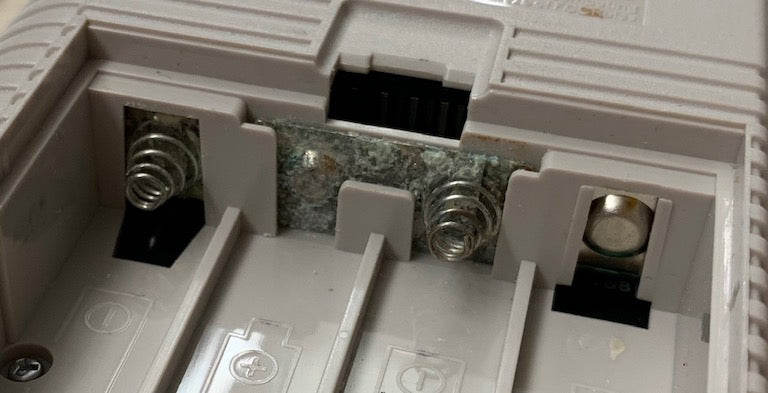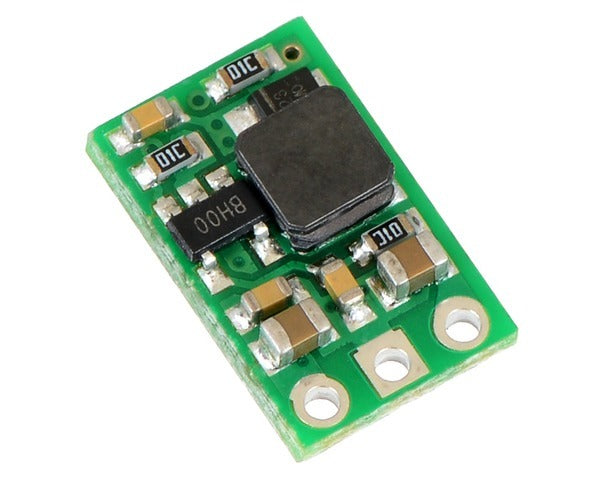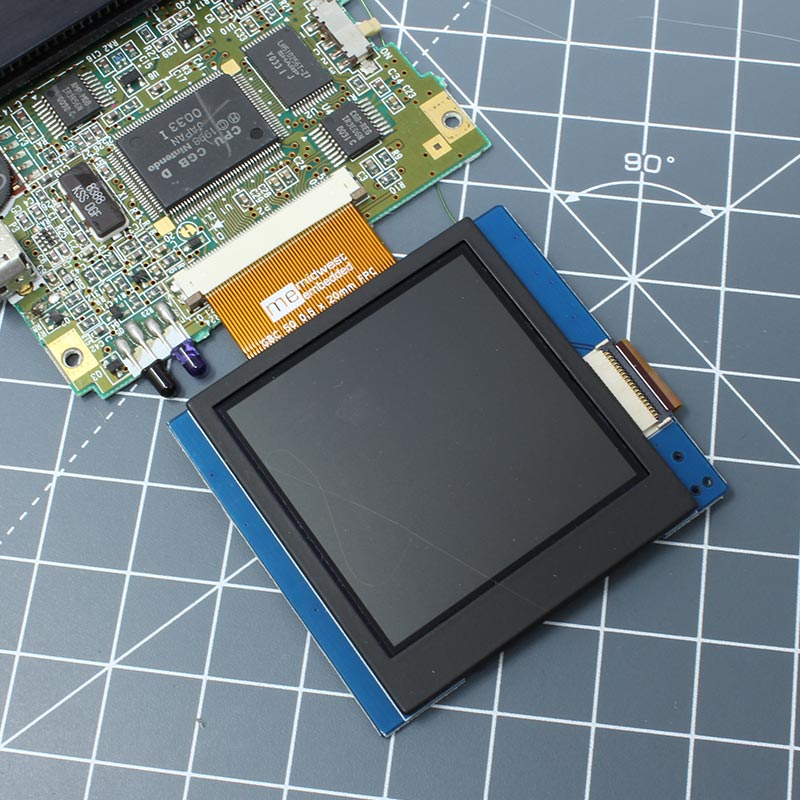When getting into console modding at any level, you're going to run across corrosion at some point - and despite how bad it might appear, it's not a death sentence for what you're working with.
What happened?
Let's skip an in-depth chemistry lesson and get at the point - batteries are a chemical reaction that gives off power through usage or just gradual discharge... and that reaction releases small amounts of gas over time. Batteries are sealed but the pressure builds until the battery ultimately leaks the electrolyte contained within it. That electrolyte, unlike the name battery acid implies, isn't acid at all but rather a strong base... on the opposite side of the pH spectrum from acids.
The ends of the pH spectrum are both corrosive to metals and plastics - and need to be cleaned up when found. Unfortunately not only is the electrolyte corrosive, it also can spread far away from where the batteries are, and get into the circuit boards and other areas.

Ok, so now what?
To counter the effects of the strong base of battery corrosion, an acid is needed… and most notably the readily available source of that would be vinegar… typically best used diluted with a bit of water. Due to lemon juice being acidic, it also could be used from a technical point of view, but isn’t recommended.
Step 1: Remove the battery contacts.
You’ll need to open up the console shell for this one, and most notably on the inside where the battery contacts are, you’ll find small tabs. Those tabs, while small, hold the battery terminal in place. Using a small screwdrivers, press the tabs in - a flathead screwdriver works best - while using another to put down to push out the terminal.

Step 2: Remove what you can.
A situation of bad corrosion can leave a lot of residue on the battery terminals - or whatever else may be corroded - and it's best to scrape off whatever is very easy to remove. No need for hard scraping or scrubbing, just whatever easily comes off.
Step 3: Prep the vinegar and drop in the terminals.
A large container wont be needed for this - something small is best as not a lot of vinegar solution will be used. To be a bit directive, we suggest 1/2-cup vinegar and 1/2-cup water, and using a container small enough so that the liquid mixture will cover the terminals.
You're going to need a timer at this point to time how long the terminals are in the solution; using the timer on your phone is likely the most handy.
Drop the terminals into the solution, and if the terminals end up face-down touching the flat surfaces together, use a fork to adjust the terminals for maximum coverage.

Step 4: Timing is everything.
Likely the first thing you'll see is some immediate bubbling at least on the surface of the contacts where the corrosion is, and in some cases you'll see the mixture around the contacts begin to actively fizz-up.
Start the timer for 2 minutes at a time, and keep coming back to the solution to see how the contacts are doing - use a fork to move the contacts around a bit to see how much of the corrosion is left. If you see some more, try another 2 minutes... or even 1 if you feel more comfortable. The reason for timing is you want to get rid of the corrosion while also removing as little of the nickel finish as possible.

Step 5: Rinsing off
Once you can see that the corrosion is gone as much as seems possible, take the contacts out and rinse them under clean water to get the vinegar solution off of them... put them on some paper towel to dry and you're set!

Step 6: Re-install the terminals.
Insert the terminals back into the shell, in the same locations and orientations as they came... if you took a photo before starting, use that... if not, just remember the flat sides are positive and the spring-side is negative.
That's it!
You're good-to-go in continuing your refurb project, knowing the terminals wont be corroding anymore.
References
• Why Batteries Leak, Consumer Reports (https://www.consumerreports.org/batteries/whybatteriesleak/)



